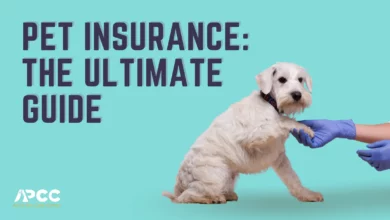Dog Health Insurance: Protecting Your Furry Friend’s Well-Being
In the realm of pet ownership, ensuring the well-being of our furry companions is paramount. As responsible pet parents, we seek to provide the best possible care for our beloved pooches. One crucial aspect of pet care that can provide peace of mind and financial protection is dog health insurance. This type of insurance can help cover the costs associated with unexpected veterinary expenses, such as accidents, illnesses, and preventive care. By investing in a comprehensive dog health insurance plan, pet owners can rest assured that their canine friends will receive the necessary medical attention they deserve, even when unexpected expenses arise.
Contents
Understanding Dog Health Insurance: A Comprehensive Guide
1. Benefits of Dog Health Insurance
Consider dog health insurance as a safety net, providing financial protection against unexpected veterinary expenses, such as injuries, illnesses, and accidents. It can give peace of mind knowing that you can afford to provide the best possible care for your furry friend.
2. Coverage Options
Insurance policies vary in coverage, so it’s essential to understand the options available. Plans typically cover a range of expenses, including hospitalization, surgeries, medication, and diagnostics. Some may also include additional benefits, such as coverage for alternative therapies or wellness exams.
3. Deductibles and Co-pays
Deductibles are the amount you pay before coverage kicks in, while co-pays are a percentage of the covered expenses that you’re responsible for. Choosing a policy with a higher deductible may lower your premiums, but you’ll have a higher out-of-pocket expense when you need to use your insurance.
4. Claim Process
Filing a claim is usually straightforward. Contact your insurance provider, submit documentation such as veterinary bills and records, and follow their instructions. Most companies have an online portal or dedicated app for easy claim submission and tracking.
5. Exclusions and Limitations
Insurance policies typically have exclusions and limitations, such as pre-existing conditions, certain procedures, or breed-specific issues. Carefully review the policy wording to understand what’s covered and what’s not.
6. Waiting Periods
Most policies have waiting periods for certain conditions or procedures. This means that coverage won’t begin immediately for these specific items, so be aware of any applicable waiting periods.
7. Annual Coverage Limit
Some policies have annual coverage limits, which means there’s a maximum amount the insurance company will pay out in a year. Consider your dog’s health history and potential future expenses when choosing a policy with an appropriate coverage limit.
8. Premiums and Renewal
Premiums are calculated based on factors such as your dog’s age, breed, location, and coverage level. Policies are typically renewed annually, and premiums may increase as your dog ages.
9. Comparison Shopping
Don’t settle for the first policy you find. Compare different providers and coverage options to find the best fit for your dog and budget. Consider the benefits, coverage levels, and premiums to make an informed decision.
10. Finding the Right Provider
Choose a reputable insurance provider with a proven track record and positive customer reviews. Look for companies that offer flexible policies, responsive customer service, and clear communication.
Veterinary Expenses: The Cost of Dog Ownership
As a responsible pet owner, it’s crucial to understand the potential financial burden of veterinary expenses that could arise throughout your dog’s lifetime. Below are some of the most common expenses you may encounter:
1. Annual Wellness Exams
Regular checkups are essential for detecting and preventing health issues. These exams typically include a physical examination, vaccinations, and bloodwork. The cost varies depending on the veterinarian, location, and the age/breed of your dog.
2. Emergency Care
Accidents and illnesses can strike at any time, leading to unexpected veterinary expenses. Emergency care can include surgeries, medications, and hospitalization, which can quickly accumulate into thousands of dollars.
3. Dental Care
Periodontal disease is a common health concern in dogs, which can lead to pain, discomfort, and further health problems. Dental cleanings, extractions, and other dental procedures can be costly.
4. Diagnostic Tests
When a dog exhibits unexplained symptoms, diagnostic tests may be necessary to determine the underlying cause. These tests can include bloodwork, X-rays, ultrasounds, and MRIs. The cost of these tests can vary depending on the test and the veterinarian performing it.
5. Allergies
Allergies are a common ailment in dogs, which can manifest as skin problems, digestive issues, or respiratory problems. Veterinary care for allergies can include allergen testing, medications, and environmental modifications.
6. Skin Conditions
Skin conditions, such as dermatitis and hot spots, can cause discomfort and itching. Treating skin conditions may involve topical treatments, medications, or in severe cases, surgery.
7. Parasite Prevention and Treatment
Internal and external parasites can pose significant health risks to dogs. Regular parasite prevention (e.g., heartworm, flea and tick control) and treatment for infestations can be essential for maintaining your dog’s health and well-being.
8. Spaying/Neutering
Spaying and neutering can prevent potential health issues and unwanted litters. The cost of these procedures varies depending on the age, size, and breed of your dog.
9. Behavioral Issues
Behavioral problems such as aggression, anxiety, and destructive behavior can impact both dogs and their owners. Veterinary care for behavioral issues may involve training sessions, medications, or other therapies.
10. End-of-Life Care
As your dog ages, they may require additional care and support. End-of-life care can include pain management, palliative treatments, and hospice care. The costs associated with these services can vary depending on the level of care required.
Veterinary Care Costs for Dogs
Veterinary care can be expensive, especially for unexpected illnesses or injuries. The cost of common veterinary procedures can vary widely depending on the location, the type of procedure, and the veterinarian’s fees. Here is a general overview of the average costs for some common veterinary procedures:
- Wellness exam: $50-$200
- Vaccinations: $20-$100 per vaccine
- Spaying/neutering: $100-$500
- Dental cleaning: $200-$500
- Emergency surgery: $1,000-$5,000+
Unexpected Veterinary Expenses
Even if your dog is healthy, there is always the potential for unexpected veterinary expenses. These expenses can be significant, and they can put a strain on your budget. Here are some examples of unexpected veterinary expenses:
- Accidents or injuries: Dogs can get into accidents or suffer injuries at any time. The cost of treating an accident or injury can vary depending on the severity of the injury.
- Illnesses: Dogs can develop illnesses at any age. The cost of treating an illness can vary depending on the type of illness and the length of treatment.
- Chronic conditions: Some dogs develop chronic conditions, such as diabetes or arthritis. The cost of managing a chronic condition can be ongoing.
Insurance Coverage for Dogs
Dog health insurance can help you cover the cost of unexpected veterinary expenses. There are a variety of dog health insurance plans available, so it is important to compare plans and find one that meets your needs. Most dog health insurance plans cover the following:
- Accidents and injuries
- Illnesses
- Chronic conditions
Some dog health insurance plans also cover other expenses, such as:
- Wellness exams
- Vaccinations
- Spaying/neutering
- Dental care
Choosing a Dog Health Insurance Plan
When choosing a dog health insurance plan, it is important to consider the following factors:
- Coverage: Make sure the plan covers the expenses that you are most concerned about.
- Deductible: The deductible is the amount of money that you have to pay out of pocket before the insurance company starts to cover the costs.
- Coinsurance: Coinsurance is the percentage of the covered expenses that you have to pay out of pocket after the deductible has been met.
- Premium: The premium is the monthly or annual fee that you pay for the insurance policy.
It is also important to read the policy carefully before you purchase it. Make sure you understand the terms and conditions of the policy, including any exclusions or limitations.
Benefits of Dog Health Insurance
There are many benefits to having dog health insurance. Some of the benefits include:
- Peace of mind: Dog health insurance can give you peace of mind knowing that you are covered in case of unexpected veterinary expenses.
- Financial protection: Dog health insurance can help you protect your finances from the high cost of veterinary care.
- Access to quality care: Dog health insurance can help you provide your dog with the best possible veterinary care, regardless of your financial situation.
Thanks for Reading!
And that’s all, folks! We hope this article has helped you better understand the ins and outs of pet health insurance. If you’re still on the fence about getting coverage for your furry friend, we encourage you to do some more research and weigh the pros and cons.
Thanks for reading, and be sure to check back later for more helpful tips and advice on keeping your pet happy and healthy.








